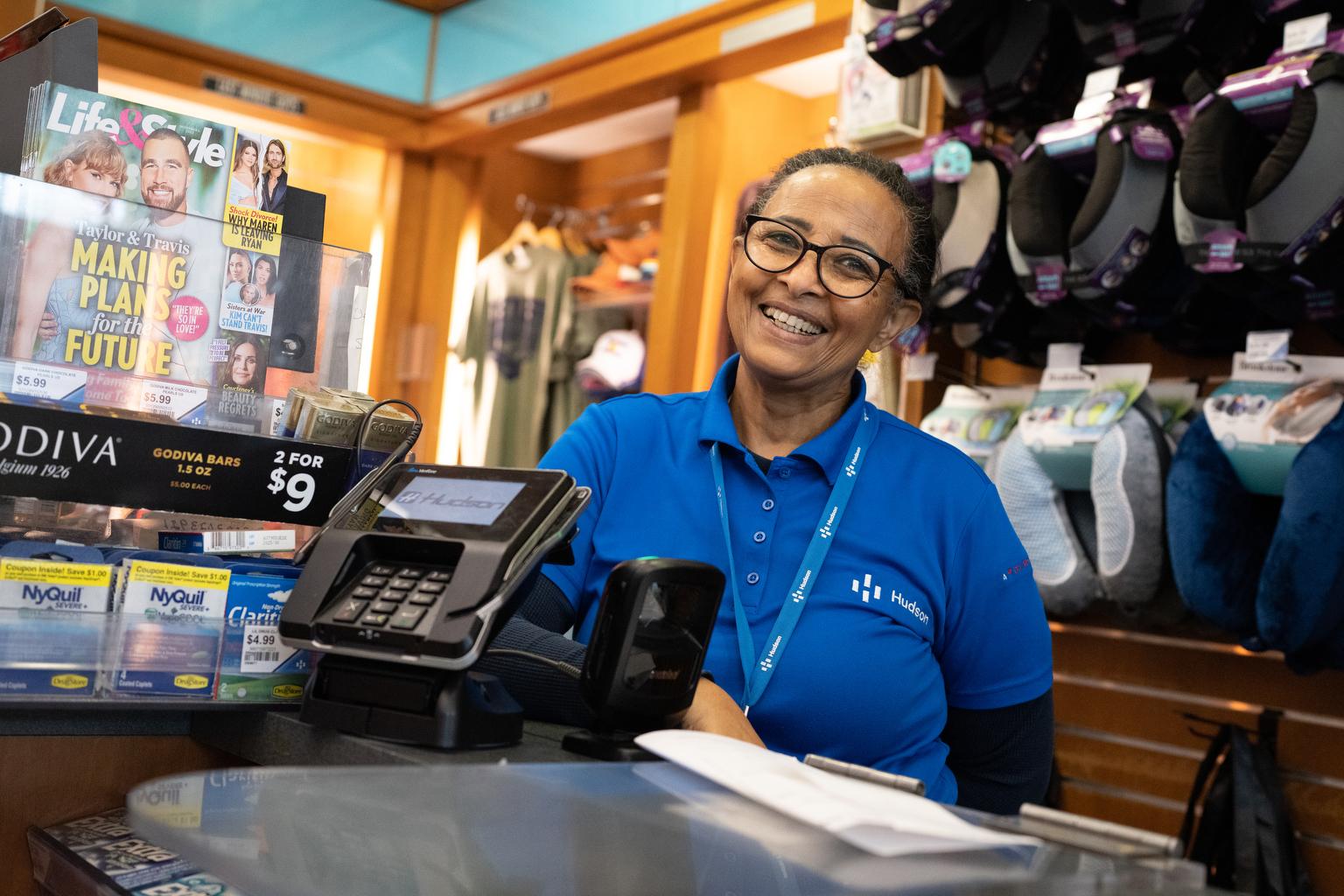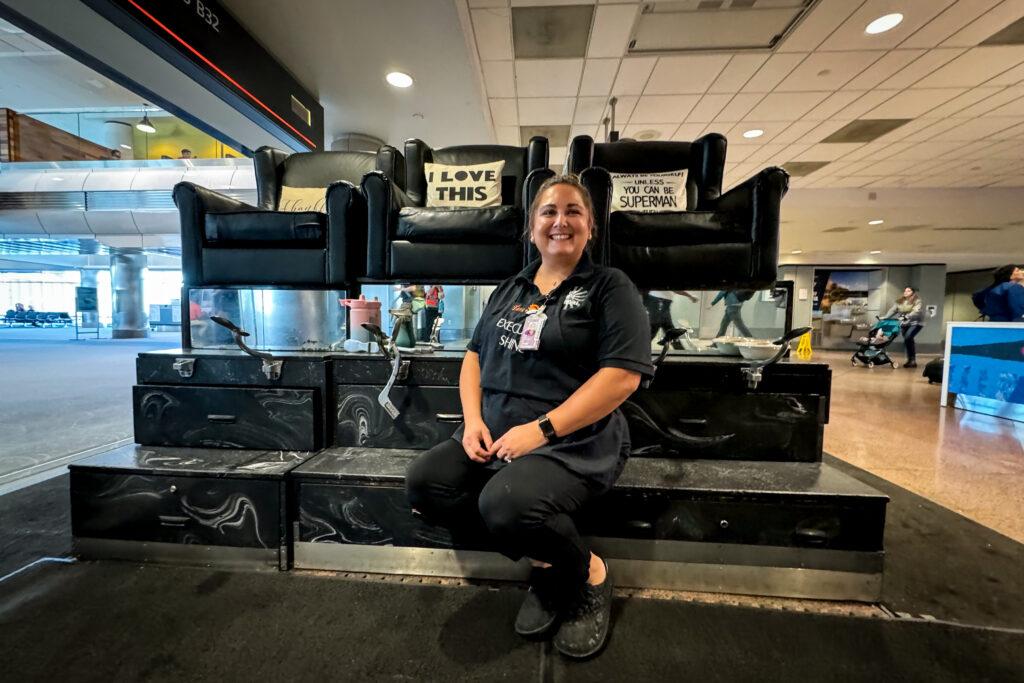
Tara Soto has seen Denver International Airport get a lot busier in the dozen years she’s worked at the shoeshine business near the middle of the B concourse.
“I remember them talking about reaching 60 million, three or four years ago, and thinking, ‘Oh my God, that's a crazy amount of people,’” she said.
This year the airport is on track to serve 78 million, according to the CEO.
Depending on the ranking, DIA is the third or fifth busiest airport in the world, and its workforce is the size of an entire city: 40,000 people work for the airport and its contractors and tenants.
People who work at DIA — whether it’s in cleaning, construction, food service, wheelchair access, baggage handling or another part of the operation — are often stopped and asked for help by travelers. They have insight into how tens of millions of people coming through DIA can best navigate it.

These employees also bear the brunt of travelers’ frustration, but also moments of humanity.
In the few minutes of rest travelers have as they get their shoes shined, they sometimes share the most intimate things with Soto. She has heard about people’s terminal illnesses, suicidal thoughts and their prayers that they can turn their lives around. She also hears stories of joy.
“You never know who's in your chair, and so we just always kind of use shining shoes as a way to connect to other people,” she said.
The employees’ top piece of advice: come to the airport early, to avoid getting stressed about security lines or getting lost.
“A lot of people think the line’s going to be short, but it tends to be longer than we think,” said Mackenzie Rodriguez, who was arranging the display at an Einstein Bros. Bagel cart in the main terminal.
“Give yourself time to navigate it, because we are busy,” said Brendan Jackson, who was putting the finishing touches on burgers and sandwiches going out to diners at Boulder Beer Tap House on a Wednesday in November.
Jackson, Rodriguez and Soto are some of the many people whose jobs include more responsibilities just because they happen to work inside the airport.
Jackson’s not just supervising what goes on at the tap house. He’s a friendly face for passengers.
“Don’t be afraid to ask questions," he said. "All the employees are here to help, so if you need any help, ask and we’ll be glad to help.”
Ermias Argowi, who works for a contractor doing things like wheelchair operation, said that he also has to be on alert at any moment for questions from travelers. They often ask him how to get to the pick-up area, how to get to security or how to find their way to some other part of DIA’s labyrinth.
Argowi said the increase in passengers has definitely affected him. He said that if last year he was assisting five or 10 people in a day of work, now it’s more like 20.
“If there are more passengers to be assisted, we have to assist them. That’s our job,” he said. “So it’s really busy. Very busy.”
For his own transportation, Argowi takes the A Line to work. It’s about an hour round trip.
He said the train represents a “big change” in his experience over the last 10 years.
“At that time we were using buses,” he said. “So it’s more efficient, it’s better now with the train for everybody — not only for the working class.”
Soto sees airport administrators taking steps to improve the experience for employees who have to park and get through security checkpoints, to make it easier to get to work.
“It gets chaotic traveling on a daily basis. So just imagine the employee coming to work, having to go through the same thing. It can be an exhausting experience,” she said.
People who work at DIA also have tips for where to freshen up and how to score the best airport meal.
The low-numbered gates in the B concourse and parts of the C concourse were recently re-done. And Diana Calandreli, who works at a credit union inside the airport, said those areas have the best restrooms.
“The bathrooms are actually a little bit wider, so you have more space,” she said.
She also likes the bigger mirrors with more lighting.
“So I know the girlies like to do their makeup at the airport — those would be the bathrooms to go to,” she said, laughing.
Courtney Law, who recently started a position in the airport’s administrative offices, said she’s a “semi-frequent traveler,” so she already has a favorite tip. She’s put the phone number for her preferred airport restaurant, Root Down in Concourse C, in her phone, and places an order for lamb sliders while she goes through the security line.
“As soon as I get on the train [to get to the gates], I know that it’s probably in progress and it’s probably waiting for me when I arrive, in under 15 minutes, usually,” she said.
One of the things people most want to know is how to get through security fastest, and that’s where Joshua Birt comes in. He’s one of the agents stationed around escalators and elevators, telling travelers which line is quickest at any given moment. It’s officially called “total queue management.”
“The lines here are big and intimidating,” he said. “(But) when I have my line wrapped around the building, that’s only 40 minutes, 30 minutes, if that.”
Birt’s job is to talk to his colleagues at each security checkpoint on their radios, and get up-to-the-minute intelligence about where to send people.
Like some passengers, he’s critical of the signage at DIA. He said that’s why the people, like him, are so important.
CPR’s Matt Bloom contributed reporting.









